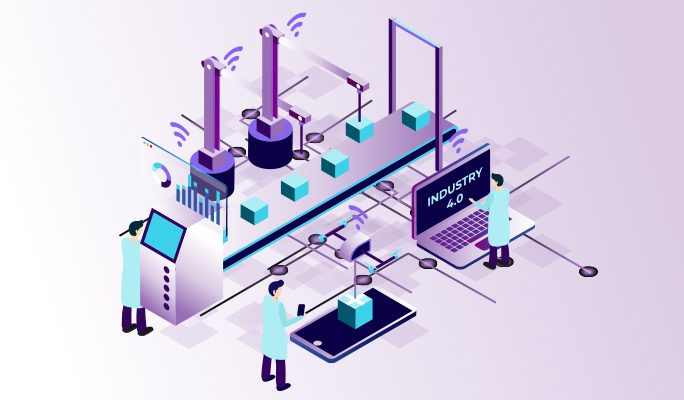How Traditional Industries are Embracing AI Technologies
Since the Industrial Revolution, industries have been looking at key parameters like productivity, quality assurance and cost reduction and ways of improving them. From production lines pioneered by Henry Ford in 1913 to just-in-time manufacturing techniques evolved at Japanese plants like Toyota to the state-of-the-art automated robotics-based production lines in Western Europe, industries have undergone drastic evolution.

In today’s world, industries like software, Internet-based services, travel, communication, electronic items and health care are known to deploy the trending technologies like IoT, deployment of AI in a variety of tasks like prediction, classification and defect detection among others. But what about traditional industries like agriculture, mining,\ railways, footwear and food production? Do they have the vision and will to technically evolve along with the rest of the new age industries? The answer is pretty much a loud YES!
At Ignitarium, we have already been working on a whole spectrum of compelling problem statements from both new-age and traditional industries. It gives us immense pleasure to share a few of the interesting use cases with respect to traditional industries.
Let’s start with trains! Right from Dr. Sheldon Cooper from The Big Bang Theory to a little kid from a remote village in India, everyone is fascinated with trains. But are you aware of how much capital and human efforts are spent on maintenance and inspection of railroad ties and plates? That’s where our AI-based solution comes in. Our expertise in the domain of image processing and computer vision has helped us tackle this scenario. We combine aerial imagery with state-of-the-art vision-based AI solutions to do the magic.

As you can see from the image, we are able to detect cracks on the wooden ties. We can also detect missing nuts on the plates. In addition, we have demonstrated our capabilities in detecting other classes of defects such as skewed ties and foreign objects on or near tracks.

One interesting use case is from the humble footwear industry. Nobody wants their footwear less than perfect, and companies have really strict manual quality control personnel whose jobs are to manually inspect cuts, creases and scratches on shoes. We have simplified their jobs with our solution, which is a custom neural network doing semantic segmentation that is able to identify the aforementioned defects from a sole in seconds. It can differentiate between a required hole/cut versus a faulty cut. And the good news is the worker gets to keep his job as the software’s GUI is so easy and intuitive that even a semi-skilled worker can operate it confidently.
Our AI-based defect detection platform has also been used to address several challenging problems from the food industry. We have implemented systems that can accurately detect various types of defects in eggs – from minor cracks to split shells to discoloration.

Another example targeting the food industry is detection of defects on cookies, where our vision-based system identifies each cookie as good, burnt or shape-deformed.
So we have successfully tackled problems from various industries like transportation, footwear and food processing. But the examples don’t stop here. We are also working in the energy sector. Usage of renewable energy sources like solar power is increasing even in developing countries. Solar panels are made of numerous solar cells. There are a number of defects which can be visually detected such as micro-cracks, scratches, cross-cracks and more. Typically, an electroluminescent camera is used to capture the images of solar panels. Enter our custom processing chain which detects the area of the whole panel, separates out individual cells and then classifies the type of the defect.

As you can see, cells with very fine scratches are highlighted as defects.
These AI-based solutions are getting more intelligent because of trending research in that domain. Vision-based solutions have capabilities to surpass human performance. Silicon manufacturers are providing fancy embedded platforms with AI accelerators on board. Cloud-based solutions are also quite useful in many places where extremely high throughput is not required.
Now, as the world tries to grapple with the COVID-19 pandemic, comes the opportunity for these traditional industries to try out ‘something new’. There is a well known Chinese saying, “When the winds of change blow, some people build walls and others build windmills.” Let’s build some amazing windmills together!























